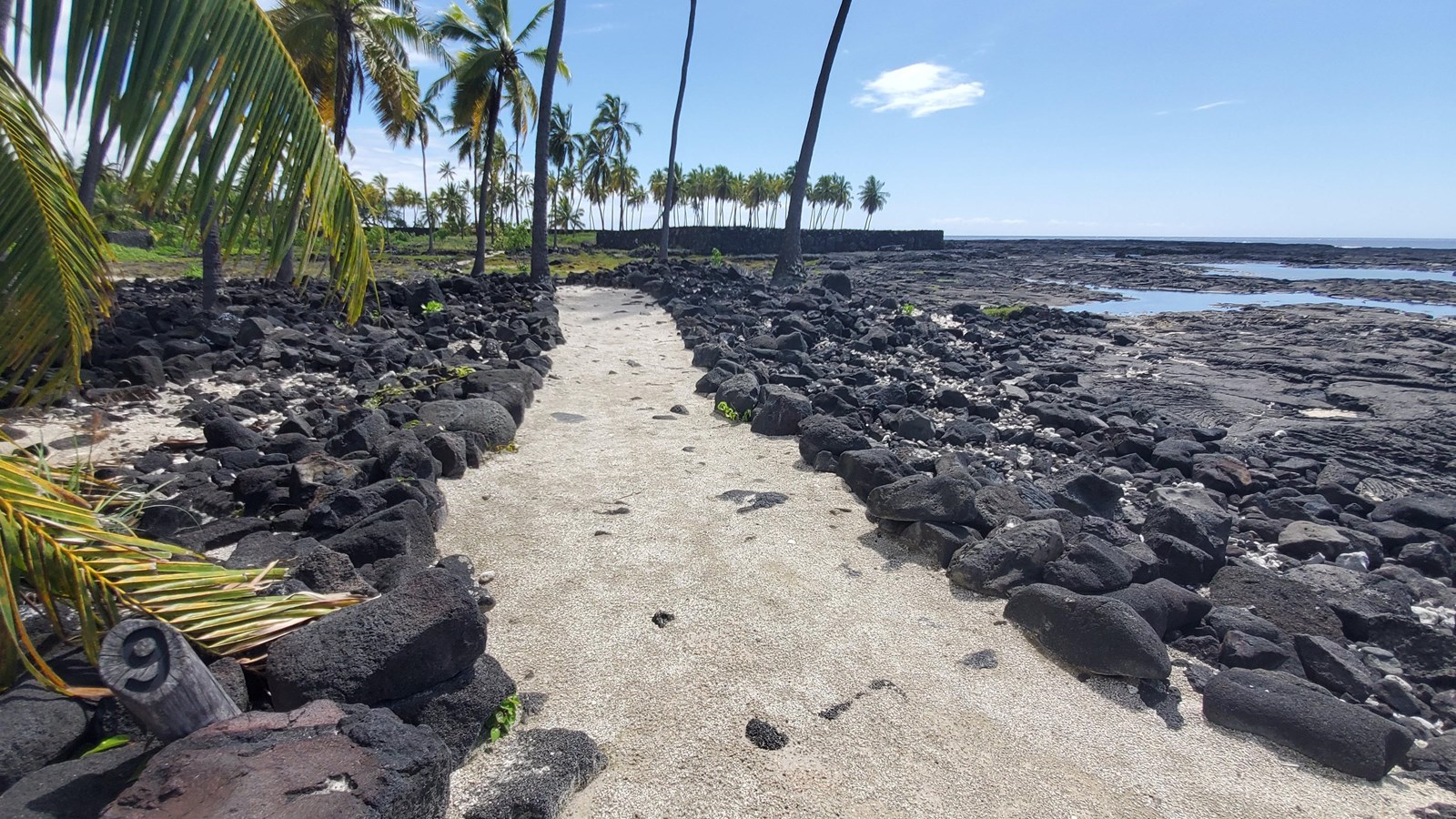Last updated: February 14, 2021
Place
#9 - The Puʻuhonua

NPS
Audio Description, Historical/Interpretive Information/Exhibits, Scenic View/Photo Spot
A Puʻuhonua is foremost a place where life could not be claimed as a means of punishment or revenge. Therefore, we say a Puʻuhonua is a place of refuge, offering healing, peace, and enlightenment.
Do you recall the system of law used in ancient Hawaiian civilization? The ʻAikapu – or kapu system – informed many aspects of society; most directly religion, government, and social conduct. Kapu, which shares linguistic roots with the word ‘taboo’, were considered absolute due to the manner in which these laws regard resources, or even systems of resources, necessary for collective health and abundance. For this reason, many kapu in old Hawaiʻi centered around the use and preservation of water, the maintenance of fisheries, and the authority of the aliʻi; who in turn carried the responsibility of maintaining and distributing these resources, as well as upholding all religious rites, rituals, and observations.
Because these kapu were considered sacred and upheld with the highest severity, the breaking of a kapu often resulted in death for the offender. If an individual condemned for violating a kapu could get within the bounds of a puʻuhonua, they would be spared this death sentence. After engaging in the holistic process of re-establishing themselves by the guidance of a kahuna pule (a priest) skilled in the healing arts, they could return to a community once more. During times of war, a pu’uhonua served as a safe haven for defeated warriors and those not able or eager to live by the spear.
Research has identified numerous sites across the islands that may have been used as puʻuhonua at one time or another, however this site at Puʻuhonua o Hōnaunau National Historical Park is the most well-preserved. In our modern era, advances in science and academia have merged with cultural tradition, and the idea of pu‘uhonua has now become conceptualized around the contemporary needs of our communities. This has resulted in new pu‘uhonua becoming established in the islands once more.
Engaging in cultural traditions and forms of knowledge is an important way to build healthy communities. What are some customs that make your home special? What traditions do you hope to see your children remember?
